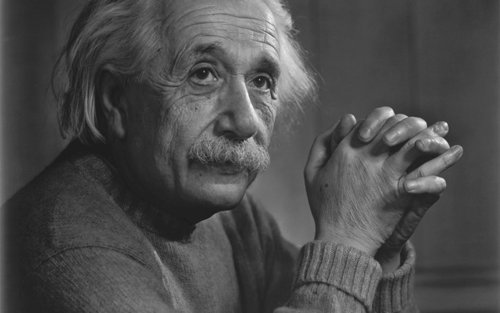Einstein’s papers get digitized, now available online
Website includes tens of thousands of never-before-seen documents from famous physicist
The Hebrew University of Jerusalem announced the relaunch of the much-anticipated, greatly expanded Albert Einstein Archives today. It now includes over 40,000 documents of Einstein’s personal papers, and 30,000 additional Einstein and Einstein-related scientific documents.

Visitors can now browse through thousands of Einstein’s handwritten letters, notes, and manuscripts. (Via jootix.com)
These papers have been discovered and reviewed, since the 1980s, by the Einstein Archives staff and editors of “The Collected Papers of Albert Einstein.” The reason why the Hebrew University of Jerusalem has access to them is because the 1921 Nobel Prize winner (theoretical physics) was a founder of the school and one of its most loyal supporters. Not only did he contribute the original manuscript of his theory of relativity to the University when it was founded in 1925, he bequeathed ALL of his writings and intellectual heritage to the University in his will.
A ton of new stuff
Some of the documents now on the website have never before been visually accessible to the public. Among the more noteworthy nonscientific documents, there’s a letter to Azmi El-Nashashibi (editor of Falastin ) suggesting a solution to the Jewish-Arab conflict; a letter to the Jewish community in Berlin in which Einstein makes a distinction between Jewish religion and Jewish nationalism; a postcard to his ailing mother; a letter from his young (24 years old) mistress, Betty Neumann; and numerous, very funny fan letters about his hair.

Image of Einstein’s travel diary on a trip to the U.S.A. (Via: The Hebrew University of Jerusalem)
Hebrew University president Professor Menahem Ben-Sasson reflected on the purpose of launching this site: ‘’This project relates to different academic disciplines: physics and basic science, the history of science, the history of Zionism and of the Hebrew University. I see great importance in the completion of another stage of the digitization project of the Einstein Archive.’’
Professor Hanoch Gutfreund, former president of the Hebrew University and the academic head of the Einstein Archive, adds: ‘’The renewed site is another expression of the Hebrew University’s intent to share with the entire cultural world this vast intellectual property which has been deposited into its hand by Einstein himself.”
Partners
The website launch was simultaneously marked at Princeton University Press and the Einstein Papers Project at the California Institute of Technology. The timing of the launch was meant to commemorate Einstein’s 133rd birthday (March 14) and observe Israel’s National Science Day .
The site required multiple partners because, as a whole, it was a huge project. Many actually view it as being one of the most ambitious publishing ventures ever undertaken in the documentation of the history of science. It was certainly worth all the effort. The entire site is very intuitive — for example, users can link each document to its printed and annotated version as it appears in the ‘’Collected Papers.’’ It’s also possible to link up to the English translation of each document (especially helpful given that most of Einstein’s papers are written in German).
Intuitive design
The website was created with specially-designed database software that allows users the ability to quickly and easily scan through the tens of thousands of recorded documents. To start, all documents are sorted out according to five separate categories: scientific activity, the Jewish people, the Hebrew University, public activities and private life. From there, the advanced search technology takes over. It enables the display of all related documents by subject and in the case of letters, by author and recipient. The first line or title of each document also gets displayed, alongside information on date, provenance, and publication history.
“In this way the content of the archives can be explored via a new user-friendly interface customized for this goal,” explained project manager Dalia Mendelsson. “This interface provides easy navigation through the life and scientific career of Albert Einstein.”
Building off the old site
There was a site before this one—it was launched in 2003 and has, until now, presented 43,000 documents and 900 manuscripts. At the start, the new site will feature about 2,000 selected documents, which translates to, roughly, 7,000 pages. They’ll all be related to Einstein’s scientific work, public activities, and private life up to 1921.

Snipped image from the aforementioned manuscript (in German) of Einstein’s “The Foundation of the General of Theory of Relativity.”
Funding
The project is funded by the Polonsky Foundation, but it is not Dr. Leonard Polonsky’s first foray into digitizing scientific documents: his foundation is also responsible for digitizing Sir Isaac Newton’s writings at the University of Cambridge. That project, in particular, attracted 29 million hits within the first 24 hours after its launch.
“We have every reason to believe that the launch of the expanded Einstein website will attract as much attention as the Newton papers. Clearly, there is a pent-up demand for open access to these intellectual treasures,” said Dr. Polonsky.
Go to the online Einstein Archives now.
Story via: The Hebrew University of Jerusalem press release. ■
Advertisement
Learn more about Electronic Products Magazine





